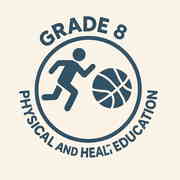Professional Courses
Industry-relevant training in Business, Technology, and Design
Categories
Interactive Games
Fun games to boost memory, math, typing, and English skills
Typing
Memory
Math
English Adventures
Knowledge

IB MYP Grade 8 Physical and Health Education
MYP Grade 8 Physical & Health Education empowers students to develop knowledge, practical skills, and attitudes that underpin a long-term healthy lifestyle. Through a balance of learning about (concepts like fitness and nutrition) and learning through (sports, personal fitness, and wellbeing), students explore key ideas such as Change, Communication, Development, and Relationships. They investigate relevant global contexts—including Scientific & Technical Innovation and Identities & Relationships—as they design personal fitness plans, engage in team and individual sports, and reflect on their physical and mental well-being. Assessment follows the IB model: Criterion A: Knowing & understanding Criterion B: Planning for performance Criterion C: Applying & performing Criterion D: Reflecting & improving performance
Course Chapters
Foundations of Physical & Health Education
The chapter provides foundational knowledge for Grade 8 students in the IB Physical & Health Education program, emphasizing the importance of diverse fitness components such as cardiovascular endurance, muscular strength, flexibility, and body composition. It also discusses training principles, nutrition basics, exercise physiology, safe lifestyle choices, and first-aid practices to promote lifelong health and fitness.
The Game 3 – Team Sports
Invasion games involve two teams competing for territory on a playing field, with success determined by teamwork, possession, and strategic movement. Different sports such as basketball, football, and field hockey share core principles yet require distinct technical skills and tactics. The chapter emphasizes the importance of communication, team dynamics, skill refinement, and an understanding of cultural influences on sports.
The Body 3 – Health & Physiology
The chapter covers the anatomy and physiology of the muscular, cardiovascular, and respiratory systems as they relate to physical activity, highlighting their acute and chronic adaptations to exercise. It also presents methods to monitor wellness and performance, effective stress management strategies, and approaches to enhance recovery. Moreover, it addresses common performance issues among adolescents and suggests evidence-based corrective actions.
The Techniques 3 – Skill Application
This chapter explores the intricate relationship between skillful movement in sport and the application of biomechanical principles, emphasizing advanced movement patterns, body control strategies, and tactical decision-making. It provides insights into individual and net/wall sports while detailing various drills and techniques aimed at skill mastery. The chapter concludes with a focus on developing personalized drills, reinforcing technical and tactical skills through a structured approach.
Health, Well‑being & Safety
This chapter focuses on the various determinants of mental, emotional, and social wellness for adolescents. It provides insights into advanced stress management, safety audits, injury prevention, and first-aid procedures, encouraging the application of coping strategies and tailored programs for wellbeing. The content blends theoretical frameworks with practical applications, ensuring a comprehensive understanding of health and safety protocols.
Adventure & Outdoor Activities
Adventure and outdoor activities enhance physical endurance, environmental awareness, and team dynamics through careful planning and execution. The chapter delves into various disciplines such as orienteering, hiking, parkour, and navigation techniques while emphasizing physiological, nutritional, and safety considerations. It also addresses the importance of environmental stewardship and community integration in outdoor initiatives.
Reflection, Goal‑Setting & Performance Development
Effective performance growth relies on intentional goal-setting, structured reflection, and well-informed adjustments. Key skills are developed through crafting SMART goals, personalized improvement plans, self-assessment, and reflective journaling, all aimed at enhancing both individual and peer performance. Feedback, both quantitative and qualitative, supports continuous development and motivation.
Assessment & Consolidation
Assessment and consolidation tasks play a crucial role in demonstrating the cumulative knowledge and skills of students in Physical & Health Education. The chapter provides comprehensive guidance on developing summative assessments aligned with IB criteria, creating a portfolio, delivering effective project presentations, and reflecting on personal growth and future goals. By the end, students will be equipped to construct appropriate assessments, compile evidence of their learning, and articulate their progress effectively.
